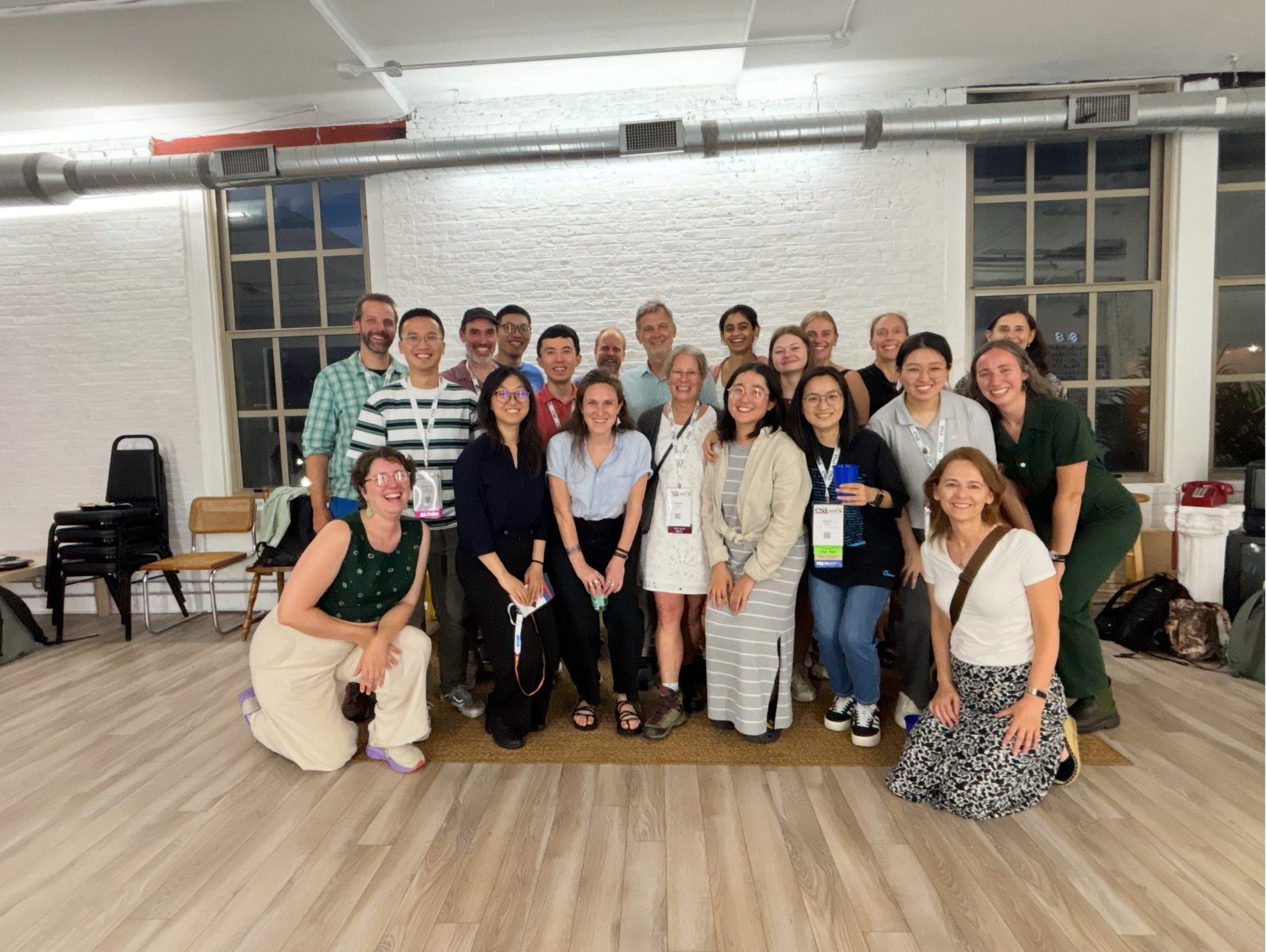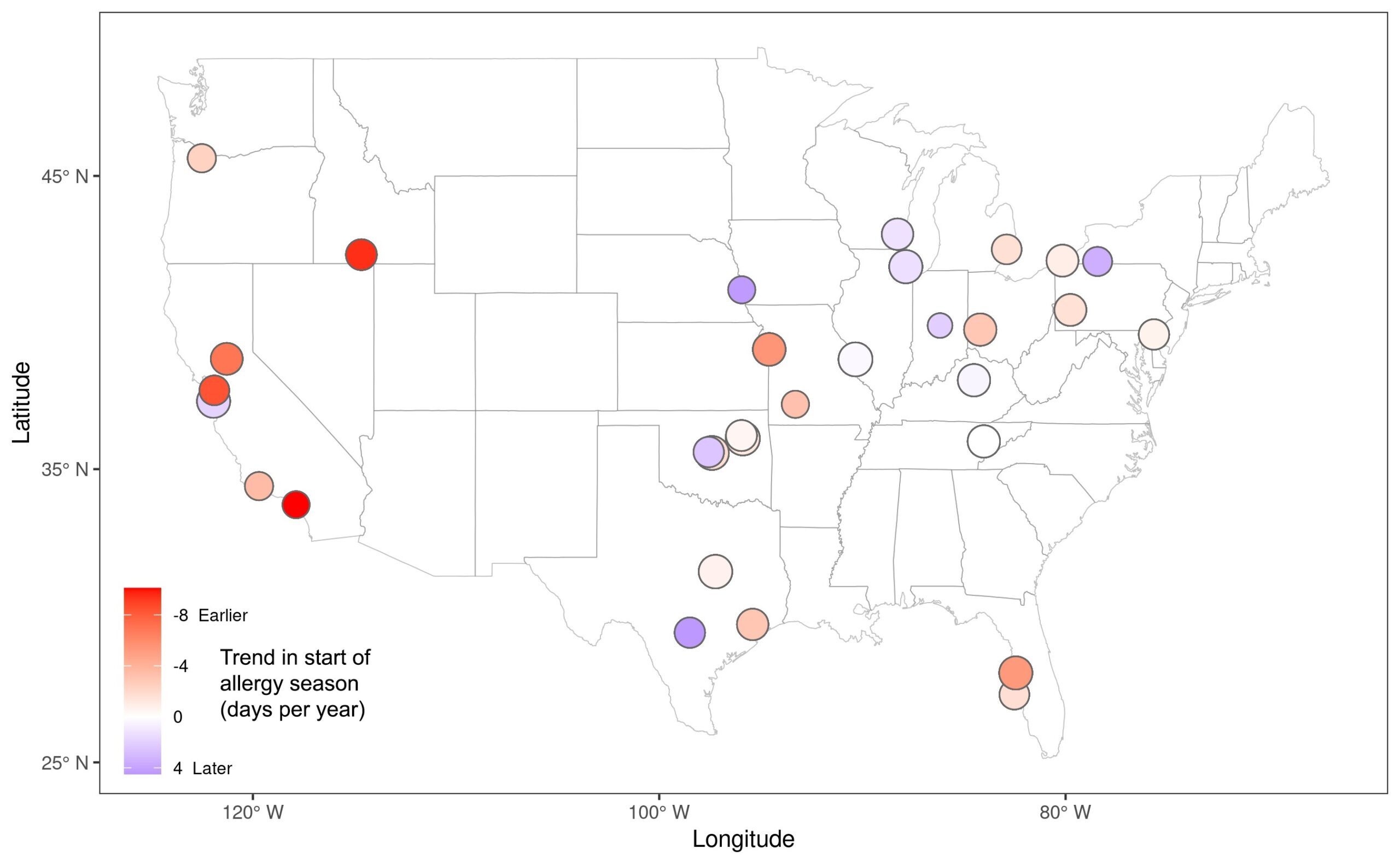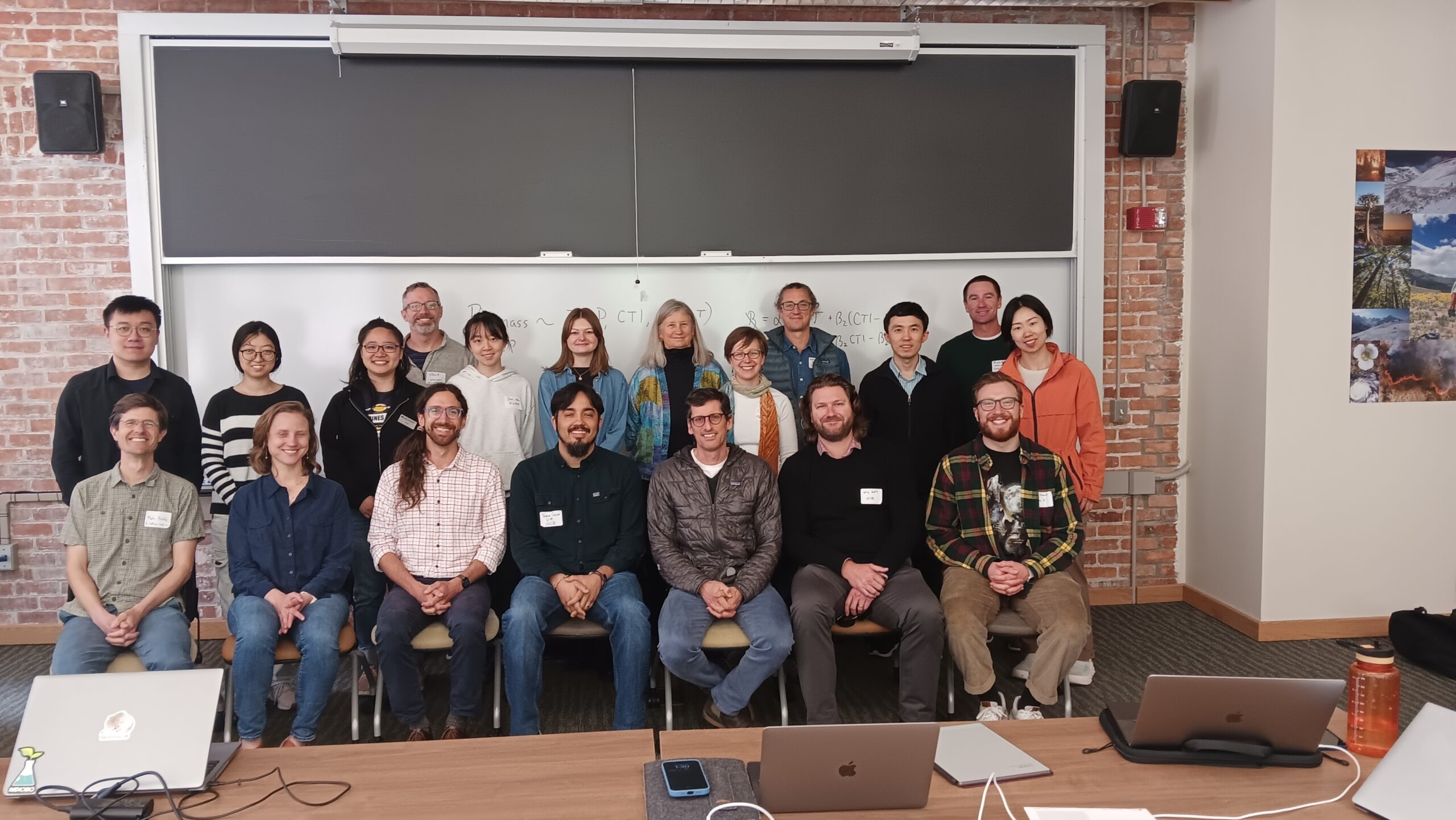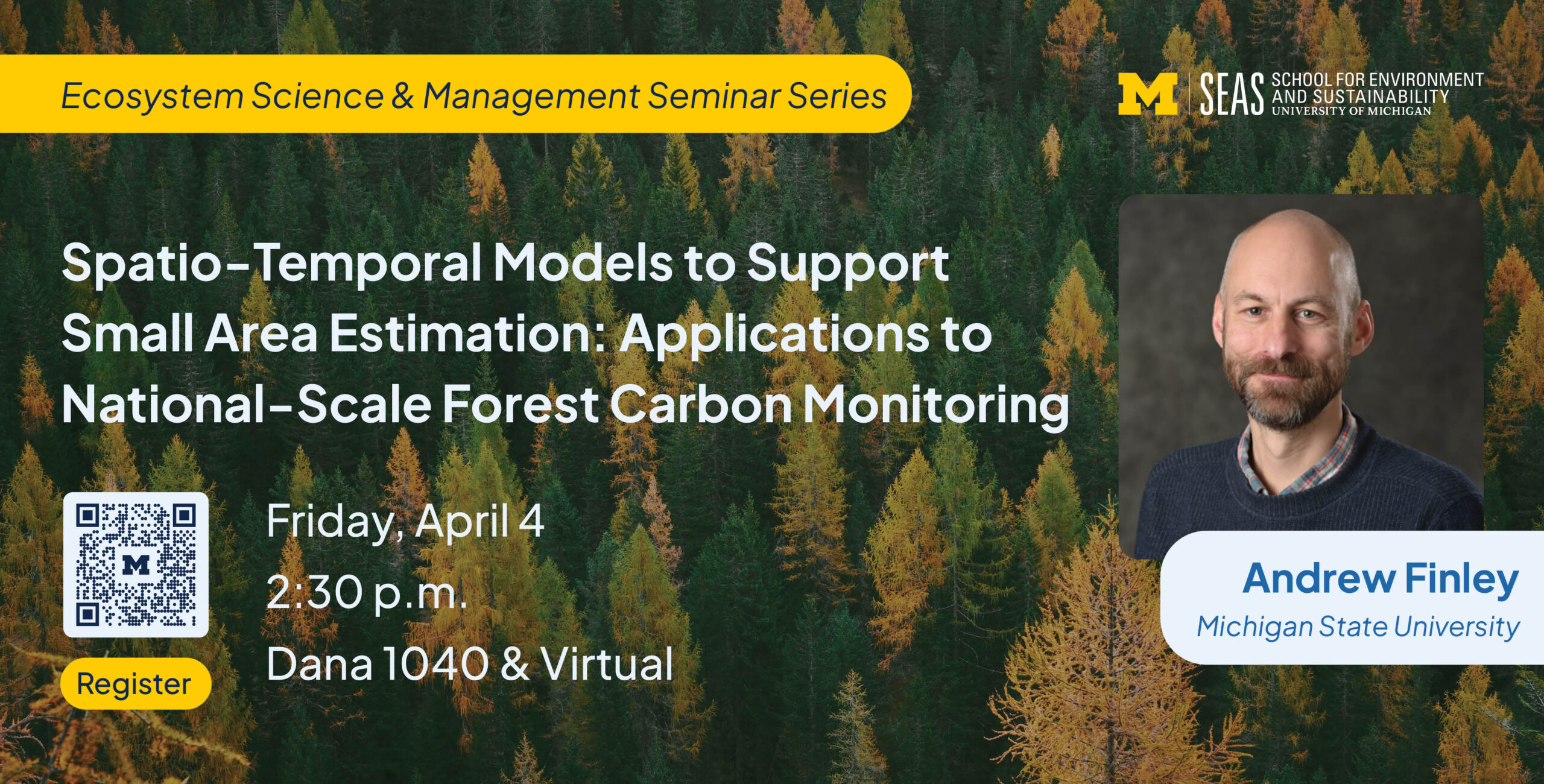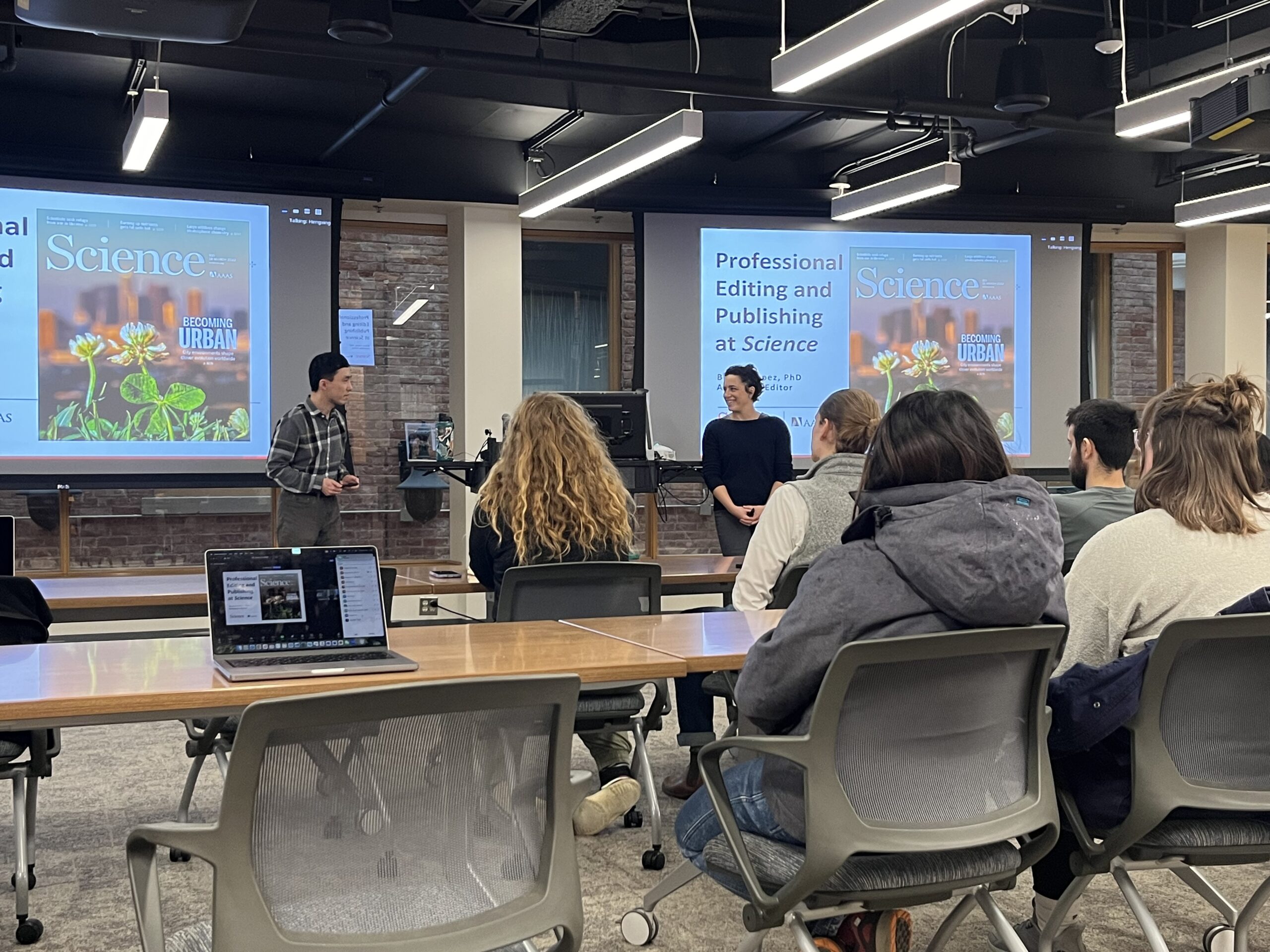From NEON blog.
Building a Forecasting Community: The EFI-RCN NEON Forecasting Challenge
June 9, 2022
…
Phenology
Yiluan Song, a grad student at the University of California – Santa Cruz, submitted her forecast in the phenology challenge. Phenology is the science of the timing of recurring biological events, such as leaf-out for plants or migration for birds. The EFI-RCN NEON Forecasting Challenge focused on plant phenology, using color (red and green) data from the NEON phenocams to monitor greenness at NEON field sites. Song says, “We always say that phenology is nature’s calendar. It also involves how these timings are affected by environmental conditions and human activities.”
Song is studying the intersections between plant phenology, climate change, and human society as part of her Ph.D. program at UCSC, working under Dr. Kai Zhu in the Environmental Sciences department. Zhu’s work is supported by an NSF CAREER Award (2045309); Song received additional support from Dr. Steve Munch at NOAA. She got into ecological forecasting after attending a workshop on empirical dynamic modeling—the method she ultimately used for the challenge. “The method is great because it is very flexible; it doesn’t require us to know a lot about the mechanisms that are driving the dynamics.”
Song’s forecasts leveraged the green (green chromatic coordinate, GCC) and red (red chromatic coordinate, RCC) pixel data from the phenocams and were automated to submit daily. (Check out this example of GCC data.) They came close to beating the null model, which is considered highly successful in the context of the contest. Song explains, “Green peaks in the summer, while red peaks in the spring and again in the fall. It’s pretty amazing that you can capture plant phenology just by the colors of the pixels.” She used an empirical model to describe a nonlinear relationship between weather data and plant phenology data from NEON forested sites. The approach is flexible, in that it does not specify whether temperature or precipitation was the environmental driver. The model performed very well at forested sites with relatively stable phenology and strong seasonality.
This empirical approach may do better at making predictions into the future than traditional models based on historical data, Song believes, especially when it comes to making predictions in a changing climate. She says, “It’s hard to model the effects of climate change because it happens on a larger timescale, ten to twenty years or longer. If we know how weather changes have impacted phenology in the past, we can model those changes pretty well in the future. But when we’re talking about climate change, with variation that we have never seen in the past, modeling becomes very hard.”
Song is excited to be attending an EFI short course in Boston this year, which was originally scheduled for 2020. She also plans to continue to expand on her forecasting work. Zhu and Munch received a grant from Microsoft to build a web app that delivers the phenology forecasting results. “We actually built the whole workflow to forecast leaf phenology and all the way to flowering phenology,” she explains. “I think it’s useful. Not even just for research, but for scientific communication, or informing recreation, or even for pollen allergies.”
Song loved the experience of participating in the challenge. “I’m a big fan of hackathons and online challenges, but it’s not often you see these in ecology. I’ve learned so much from the dashboard and materials that the organizers created for us. And I learned a lot about using the cyberinfrastructure to automate the workflows.”



